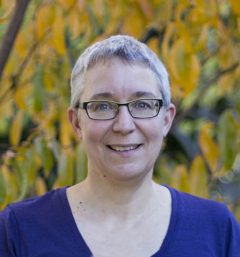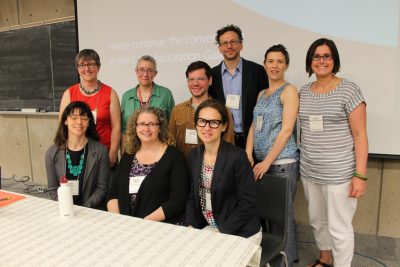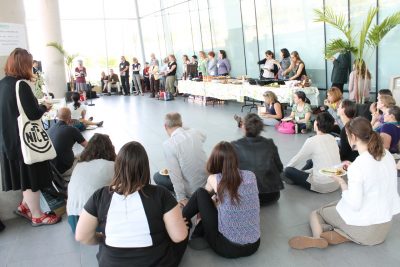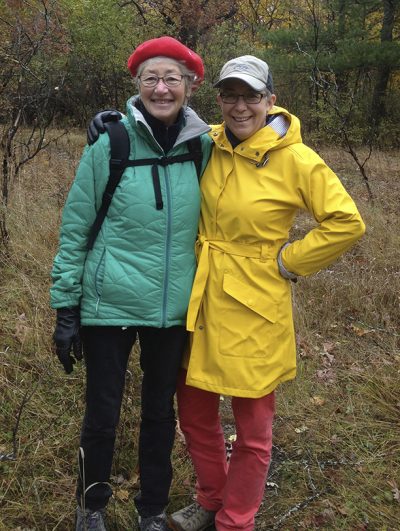by Carly Foubert, CFICE Volunteer
CFICE is an action-research project that seeks to engage effectively with the community across a variety of different research hubs. In order to achieve our goals, there are many significant people involved that work to initiate and foster relationships between community and campus through brokerage and partnership. Abra Brynne is one of these important figures.
Abra Brynne was previously a project manager of Food Secure Canada (FSC) that works predominantly with the community side of the Community Food Security hub of CFICE. In this role, she acted as a liaison between CFICE and FSC, and collaborated on a few projects each year, checking in to see how work was progressing and providing any support the projects might require.
Abra says that her time with CFICE has allowed her to gain an understanding of how the academic world works and what constraints and opportunities go in-hand with academia.
“It was really interesting to me to learn how I can be connecting more effectively with academia in my own work, but also making that information more broadly accessible with communities with which I work,” said Abra.
CFICE has also shown her the kind of support systems for engaging directly with communities that exist within some of the academic institutions, such as community-based research and community service learning models.
Of her time with CFICE, Abra says that it has been interesting to see from a community perspective how the project has evolved. Through community-campus partnerships, Abra says that CFICE has helped identify that the dichotomy and division between community and academia is rather artificial and arbitrary.
“There are many activists within the academic community. There are researchers within the community base, and so some of those divisions are artificial and arbitrary and I think the CFICE project has shone a light on that,” says Abra.
CFICE has helped bring the two together and create a deeper credibility and recognition for the research and knowledge generation that comes out of the community. Abra says this has been a really important contribution of the CFICE project.
CFICE has also provided its partners with historical background, analytical skills and data that can provide communities with context to help leverage their own work. In addition, Abra says that CFICE has given her, and other partners, opportunities for learning and building relationships with like-minded individuals through such activities as supporting Abra’s attendance at conferences such as the Canadian Association of Food Studies conference.
“I’ve also really appreciated the opportunity to attend the various academic conferences…that has allowed me to strengthen relationships, make some new ones, and get exposure to academic work on food systems that I wouldn’t otherwise be able to do.”
Of her experience with CFICE, Abra says that the people she has worked with have been amazing and patient as she navigated her role and found where her perspective was of value.
Abra would especially like to acknowledge and pay tribute to Cathleen Kneen from FSC who passed away in February of this year.
“She is irreplaceable for her wisdom, her generosity, her incredible support, her analysis, her feisty feminism and willingness to learn and adapt. My only consolation in the face of this enormous loss is that her legacy is almost as large and available to us in many ways, through her presentations, her writing, and her wonderful editorial drawings.”



